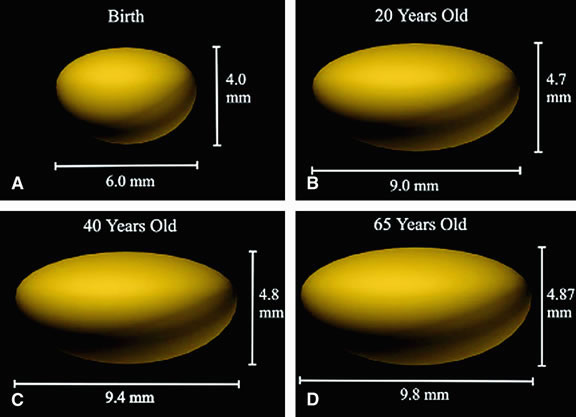

|
| Fig. 8. 3-D drawings illustrating changes in the lens equatorial and pole-pole dimensions with age. At the time of birth (panel A) the lens is an asymmetric ellipse with an equatorial diameter approximately 1.5 times the anterior-posterior dimension. In the young adult (panel B), the equatorial diameter is close to twice the length of the anterior-posterior dimension, illustrating the unequal growth rate in the two lens axes. Panel C and D also show that throughout adult life, the equatorial dimension of the lens increases faster than the polar dimension. (Al-Ghoul KJ, Nordgren RK, Kuszak AJ et al: Structural evidence of human nuclear fiber compaction as a function of aging and cataractogenesis. Exp Eye Res 72:199, 2001) |